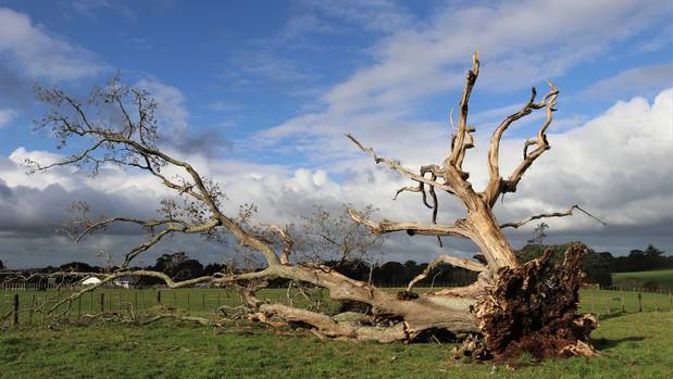
New Zealand's oldest oak tree has died at the grand old age of 194.
The old oak, in Northland, survived fire, witnessed the emergence of one of New Zealand's first mission stations and the country's first European-style farm, lived through the Northern Wars, and was admired by the naturalist Charles Darwin.
Last Sunday, however, a gust of wind proved too much for the venerable old oak, which came crashing down in a paddock at Waimate North, 15km north east of Kaikohe.
The tree started its life as an acorn brought by ship from England in 1824 by pioneering missionary Richard Davis. It is thought to have been one of several acorns planted at Paihia Mission Station and the only sapling to survive a fire which swept through the grounds a few years later.
It was transplanted at Waimate North around 1830, where in 1835 it caught the attention of Charles Darwin and Robert Fitzroy, a Navy officer and scientist also travelling on the Beagle. Remarking on the young tree in his diary, Fitzroy wrote: ''Englishmen one now meets everywhere; but a living, healthy English Oak was a sight too rare, near the Antipodes, to fail in exciting emotion''.
The tree's demise saddened Alex Bell, who manages Te Waimate Mission for Heritage New Zealand.
''Its sprawling branches bore witness to the growth of the Mission and the emergence of the farm and settlement, the signing of the Treaty of Waitangi and the transformation of the mission into a military settlement during the Northern Land Wars,'' he said.
''While its crown has thinned over the years, its leafy green canopy has been a prominent feature on the Te Waimate landscape for nearly two centuries and it stirred the hearts of many homesick British settlers.''
Bell said he had taken some cuttings from the tree in the hope they could be used to propagate it.
Natasha Baird, who has owned the property for a few years but only lived there for a month, said she heard an ''almighty crash'' about 12.05pm on Sunday.
The oak appeared to be coming back to life last year when half its branches were lush and green.
''But it probably had a rough winter and couldn't do it any longer, the poor thing. It's sad, it's the end of an era.''
She and her partner had hoped to collect some acorns in case the tree didn't survive but never found any. The old oak was the last visible sign of the property's history, she said.
A New Zealand Archaeological Association report from 1980 stated the tree was still in ''fairly good condition'' at that time with a girth of more than 3.4m and branches spreading over more than 60m.
Other historic exotic trees in Northland include a pear tree near Kerikeri's Stone Store, planted in 1819 and still bearing fruit; a Magnolia grandiflora, a fig and an olive tree planted at Butler Pt, near Mangonui in the 1840s and 50s; and a Moreton Bay fig planted on the Russell waterfront in the 1870s.
Take your Radio, Podcasts and Music with you









